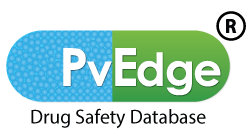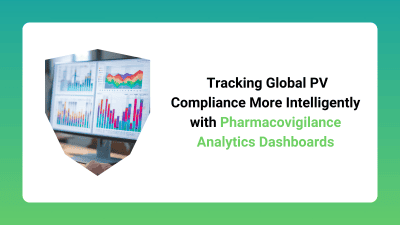The Need for Advanced PV Monitoring Tools
Marketing Authorisation Holders (MAHs) manage complex pharmacovigilance (PV) operations across multiple regions. Ensuring timely reporting, regulatory compliance, and data quality is increasingly challenging, especially with large volumes of safety data. Pharmacovigilance analytics dashboards provide MAHs with real-time visibility into global PV operations, enabling informed decision-making, process optimisation, and compliance assurance.
How Pharmacovigilance Analytics Dashboards Enhance Compliance
Traditional PV systems often rely on static reports and manual tracking, which can delay insights and obscure performance gaps. Pharmacovigilance analytics dashboards offer dynamic, interactive reporting that allows MAHs to:
Monitor Case Processing Metrics: Track timelines, workload distribution, and backlogs in real time.
Ensure Regulatory Adherence: Identify delayed submissions or incomplete documentation before deadlines pass.
Detect Trends and Signals: Aggregate safety data across regions to spot emerging patterns or safety signals early.
Facilitate Audit Readiness: Maintain up-to-date metrics and documentation for regulatory inspections.
By consolidating data into a single, intuitive interface, dashboards allow PV teams to act proactively rather than reactively, supporting both operational efficiency and regulatory compliance.
Key Benefits of Using Pharmacovigilance Analytics Dashboards
Enhanced Decision-Making
Dashboards provide visual insights into case trends, compliance KPIs, and operational bottlenecks, enabling faster and more informed decisions.
Real-Time Monitoring
MAHs can track global PV activities as they happen, reducing the risk of missed deadlines and incomplete case reporting.
Improved Collaboration Across Teams
Analytics dashboards allow cross-functional teams, including PV, quality, and regulatory, to access the same data simultaneously, promoting consistent decision-making.
Data-Driven Resource Allocation
By highlighting workload trends and resource bottlenecks, dashboards enable MAHs to allocate staff and tools where they are most needed, improving overall PV efficiency.
Implementing Pharmacovigilance Analytics Dashboards Successfully
Integrate with Existing PV Systems
Dashboards must connect seamlessly with case management systems, literature monitoring platforms, and regulatory reporting tools to provide a complete operational view.
Define Key Performance Indicators (KPIs)
Identify metrics such as average case processing time, compliance rates, and signal detection efficiency to track performance effectively.
Automate Reporting and Alerts
Set up automatic notifications for overdue cases, deviations, or anomalies to allow immediate corrective actions.
Train Teams on Dashboard Usage
Ensure PV teams and MAH staff understand how to interpret dashboard data and take proactive steps based on insights.
Challenges and Considerations
While pharmacovigilance analytics dashboards provide numerous benefits, MAHs should consider:
Data Accuracy: Dashboards are only as reliable as the underlying data; robust data quality checks are essential.
System Security: Ensure dashboards comply with data privacy laws, including GDPR and HIPAA.
User Adoption: Staff must be trained and supported to effectively use dashboard insights in daily operations.
Addressing these factors ensures dashboards deliver actionable insights while maintaining compliance and operational integrity.
Transforming Global PV Compliance with Analytics Dashboards
In an increasingly complex pharmacovigilance landscape, MAHs need tools that provide transparency, insight, and control over global operations. Pharmacovigilance analytics dashboards empower teams to monitor compliance in real time, optimise workflows, and proactively manage safety data across multiple regions.
By leveraging these dashboards, MAHs can enhance decision-making, reduce compliance risks, and ensure that PV operations remain both efficient and regulatorily aligned. Analytics dashboards are more than just reporting tools — they are strategic instruments for transforming global pharmacovigilance into a data-driven, proactive function.


